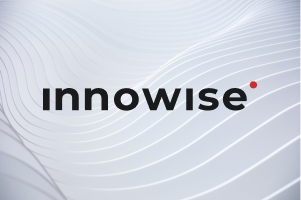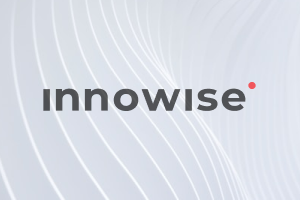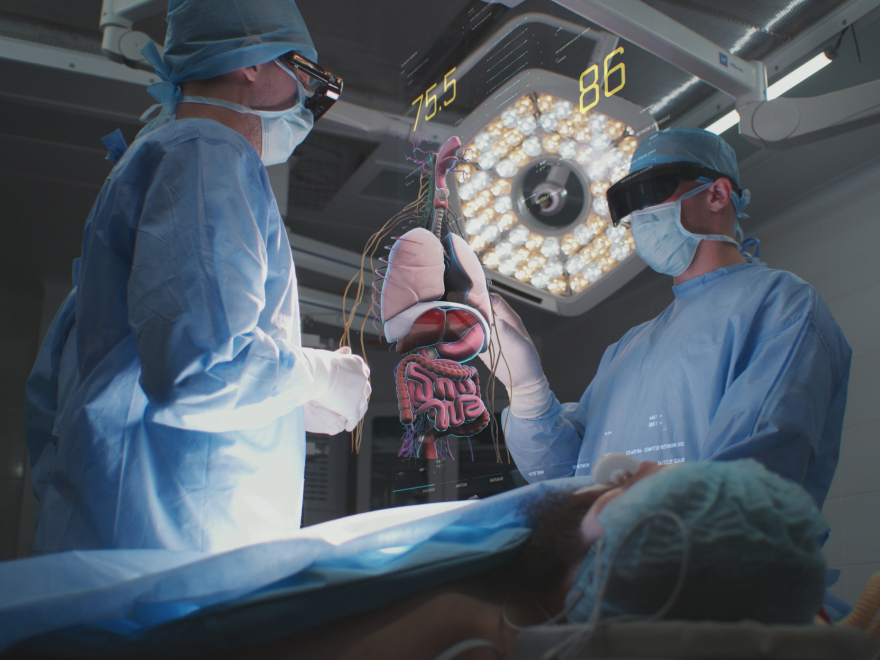Su mensaje ha sido enviado.
Procesaremos su solicitud y nos pondremos en contacto con usted lo antes posible.
El formulario se ha enviado correctamente.
Encontrará más información en su buzón.

Seleccionar idioma


El mapeo de datos en sanidad es un proceso de correspondencia de campos entre bases de datos de distintos sistemas de información. En otras palabras, el mapeo de datos da sentido a cada conexión y crea un proyecto detallado para todos los datos sanitarios dentro de un ecosistema informático.
Los datos sanitarios proceden de diversas fuentes, como EMR o EHR, CRM médicos dispositivos portátiles, sistemas de imágenes médicas y sistemas de facturación. Cada una de estas fuentes utiliza distintos estándares de intercambio de datos y terminología, lo que puede complicar las cosas. Por ejemplo, un sistema de radiología puede utilizar DICOM y la HCE HL7, o distintos hospitales pueden codificar procedimientos con sistemas diferentes, como CPT y SNOMED CT. Estas variaciones dificultan la integración e interpretación de los datos médicos.
Al aprovechar el mapeo de datos como parte de su desarrollo de software sanitario los proveedores pueden conectar fácilmente datos similares y transformarlos en un estándar unificado. Como resultado, las empresas sanitarias pueden superar la fragmentación común a los sistemas de datos en el sector y utilizar eficazmente los datos para la atención al paciente.
Mayor control del ecosistema informático sanitario gracias al mapeo de datos
El mapeo de datos suele formar parte del proceso de migración de datos en proyectos de mayor envergadura. En sanidad, se aplica en diversos ámbitos, pero hay algunos escenarios comunes.
Migración de datos se refiere a transferir datos de un sistema a otroA menudo, cuando se cambia a un nuevo sistema, se actualiza uno existente, se pasa a la nube o se lleva a cabo una transformación digital. Durante la migración, el mapeo de datos establece conexiones entre los campos de datos de diferentes sistemas informáticos, permite la transferencia sin errores y ayuda a mantener la coherencia de los datos en todas las soluciones.

Integración de datos combina datos de distintas fuentes en un único lugarEl mapeo de datos es un paso natural en la integración, ya que sirve de puente entre los sistemas que utilizan los mismos datos y garantiza su coherencia y precisión. El mapeo de datos es un paso natural durante la integración, ya que sirve de puente entre los sistemas que utilizan los mismos datos y garantiza su coherencia y precisión.

Los profesionales sanitarios a menudo necesitan convertir datos de un formato a otroya sea para integrar varios sistemas o para facilitar el uso y el análisis de los datos. Con el mapeo de datos sanitarios, pueden comprender las conexiones entre los datos de las bases de datos, independientemente de las formas en que esté almacenada la información, y proceder después a su transformación en un formato unificado.

Al implantar la inteligencia empresarial en la atención sanitaria, la asignación de datos ayuda a garantizar que los datos de varias fuentes se alineen correctamente para el análisis. Al vincular diferentes fuentes de datos, se agiliza la extracción, limpieza y preparación de datos. De este modo, las herramientas de BI acceden a datos listos para el análisis y proporcionan información más precisa y procesable.

Muchas soluciones de elaboración de informes emplean terminología y estructuras de datos únicas, por lo que las empresas médicas tienen que ajustar sus datos para que encajen. Aprovechando el mapeo de datos, los proveedores sanitarios sincronizar sus datos con la terminología y estructura de los informes. Ayuda a definir qué datos se necesitan para informes y registros específicos y agiliza este proceso.

Intercambio electrónico de datos (EDI) automatiza el intercambio de documentos entre empresas sanitarias - como hospitales y compañías de seguros, optimizando los flujos de trabajo y la gestión de registros. En este caso, el mapeo de datos especifica los datos utilizados en los documentos, dónde se encuentran y cómo deben transformarse para que coincidan con la estructura de datos requerida por el software de destino.

Migración de datos se refiere a transferir datos de un sistema a otroA menudo, cuando se cambia a un nuevo sistema, se actualiza uno existente, se pasa a la nube o se lleva a cabo una transformación digital. Durante la migración, el mapeo de datos establece conexiones entre los campos de datos de diferentes sistemas informáticos, permite la transferencia sin errores y ayuda a mantener la coherencia de los datos en todas las soluciones.

Integración de datos combina datos de distintas fuentes en un único lugarEl mapeo de datos es un paso natural en la integración, ya que sirve de puente entre los sistemas que utilizan los mismos datos y garantiza su coherencia y precisión. El mapeo de datos es un paso natural durante la integración, ya que sirve de puente entre los sistemas que utilizan los mismos datos y garantiza su coherencia y precisión.

Los profesionales sanitarios a menudo necesitan convertir datos de un formato a otroya sea para integrar varios sistemas o para facilitar el uso y el análisis de los datos. Con el mapeo de datos sanitarios, pueden comprender las conexiones entre los datos de las bases de datos, independientemente de las formas en que esté almacenada la información, y proceder después a su transformación en un formato unificado.

Al implantar la inteligencia empresarial en la atención sanitaria, la asignación de datos ayuda a garantizar que los datos de varias fuentes se alineen correctamente para el análisis. Al vincular diferentes fuentes de datos, se agiliza la extracción, limpieza y preparación de datos. De este modo, las herramientas de BI acceden a datos listos para el análisis y proporcionan información más precisa y procesable.

Muchas soluciones de elaboración de informes emplean terminología y estructuras de datos únicas, por lo que las empresas médicas tienen que ajustar sus datos para que encajen. Aprovechando el mapeo de datos, los proveedores sanitarios sincronizar sus datos con la terminología y estructura de los informes. Ayuda a definir qué datos se necesitan para informes y registros específicos y agiliza este proceso.

Intercambio electrónico de datos (EDI) automatiza el intercambio de documentos entre empresas sanitarias - como hospitales y compañías de seguros, optimizando los flujos de trabajo y la gestión de registros. En este caso, el mapeo de datos especifica los datos utilizados en los documentos, dónde se encuentran y cómo deben transformarse para que coincidan con la estructura de datos requerida por el software de destino.

Datos de mala calidad cuesta a las organizaciones una media de $12,9 millones al año según Gartner. Y los problemas de datos se acumulan, dando lugar a ecosistemas de datos enmarañados e imprecisiones que influyen en la toma de decisiones. El mapeo de datos puede ayudar a abordar muchos de ellos y aportar las siguientes ventajas.
Como el mapeo de datos es esencial para la interoperabilidad, ayuda a los profesionales sanitarios a acceder a la información asistencial completa, aunque esté dispersa en distintos sistemas. Les ahorra tiempo en la búsqueda de datos, mejora la coordinación asistencial y reduce las cargas administrativas.
Al cotejar datos de distintas fuentes, los profesionales sanitarios conocen mejor el perfil de salud del paciente, incluidas alergias, medicación y tratamientos anteriores. Esto agiliza las derivaciones, minimiza los retrasos y mejora los resultados de los pacientes.
La introducción manual de datos es habitual en la asistencia sanitaria y a menudo da lugar a errores, duplicados o problemas de facturación. El mapeo de datos puede ayudar en la transferencia de registros entre distintos sistemas, aliviando la carga de trabajo del personal médico. Los estudios demuestran que funciona: 30% de los proveedores dicen que las plataformas de datos agregados les ayudaron a ahorrar costes y gestionar mejor su mano de obra.
Con un mapeo de datos adecuado, las organizaciones sanitarias pueden garantizar que los registros estén estructurados de forma coherente y gestionados de conformidad con marcos normativos como HIPAA y GDPR. Al organizar y consolidar los datos en una sola plataforma, las organizaciones pueden garantizar la exactitud de los datos y mantener más fácilmente los requisitos de seguridad de la información sanitaria protegida.
Al adoptar el mapeo de datos, las organizaciones sanitarias pueden realizar análisis de datos exhaustivos e identificar áreas para la optimización de recursos. Esta información ayuda a asignar el personal y los equipos de forma más eficiente, mejorar el rendimiento del personal y maximizar el uso de los recursos.
Los investigadores pueden utilizar la cartografía de datos para crear conjuntos de datos exhaustivos y realizar ensayos clínicos y estudios de investigación a gran escala. Esto les permite identificar tendencias en los patrones de enfermedad, predecir las necesidades de recursos y desarrollar estrategias sanitarias más eficaces.
"Según mi experiencia, los proveedores de atención sanitaria con ecosistemas de datos complejos necesitan absolutamente un mapeo de datos sólido, especialmente cuando se someten a la transformación digital. He visto de primera mano lo esencial que es agilizar el flujo de datos a través de diversos sistemas para garantizar la precisión y la coherencia. Mi equipo y yo tenemos un profundo conocimiento de los procesos sanitarios y podemos ayudar a su empresa a mapear los datos sanitarios, sentando las bases para proyectos de TI más complejos e innovadores."

Aleh Yafimau
Gestor de entregas
El software EHR de Epic es utilizado por más de 305 millones de usuarios en todo el mundo. La base de un intercambio de datos fluido es el mapeo de datos. Esta tecnología permite a los profesionales sanitarios intercambiar información sin esfuerzo y ofrecer una atención mejorada y personalizada.
Merative, antes conocida como IBM Watson Health, aplica el mapeo de datos para integrar los datos de los pacientes de distintas instituciones y profundizar en la investigación. También garantiza la precisión y estandarización de los datos para un análisis de IA preciso, lo que permite tomar mejores decisiones sanitarias.
La plataforma HealthShare de InterSystems gestiona más de mil millones de historiales médicos en todo el mundo y resuelve el problema de los silos de datos en la asistencia sanitaria. Mediante el mapeo de datos, HealthShare integra y agrega a la perfección información de pacientes procedente de diversas fuentes, como historias clínicas electrónicas y sistemas de diagnóstico por imagen.
Redox se especializa en la integración de datos sanitarios, conectando organizaciones, aplicaciones y fuentes de datos. Aprovechan el mapeo de datos para optimizar el intercambio de datos y garantizar un acceso y un intercambio seguros de los datos de los pacientes. Además, Redox facilita el intercambio bidireccional de datos en tiempo real en múltiples entornos y permite la transformación de estándares de datos heredados.
El mapeo de datos es crucial para gestionar la ingente cantidad de datos sanitarios que se generan. Con la cartografía de datos, los profesionales sanitarios pueden ofrecer una atención más informada, reducir errores y costes operativos y personalizar los planes de tratamiento.
Sin embargo, el éxito de la aplicación requiere una planificación cuidadosa y experiencia. Nuestro equipo de expertos puede ayudarle a navegar por las complejidades del proceso y garantizar una transición fluida. Si está interesado en saber más sobre el mapeo de datos, sus posibles beneficios para su empresa y cómo podemos ayudarle a aprovecharlo para lograr un cambio positivo, no dude en ponerse en contacto con nosotros.
En resumen, el mapeo de datos en sanidad consiste en vincular campos entre bases de datos de sistemas. El mapeo es un paso esencial de la migración e integración de datos y se utiliza para intercambiar información entre dos o más sistemas, como EMR, EHR o aplicaciones de pacientes. Además, permite el análisis basado en conjuntos de datos, el análisis predictivo, las pruebas de medicación, la investigación de pacientes, etc.
El mapeo de datos agiliza la agregación de información procedente de múltiples fuentes, lo que facilita la coordinación asistencial entre profesionales médicos y agiliza la toma de decisiones clínicas. Al no ser necesaria la introducción manual de datos en varios sistemas, se reducen los riesgos de pérdida de datos, errores médicos, registros duplicados o inexistentes y problemas de seguridad y cumplimiento.
El mapeo de datos sanitarios, cuando se hace bien, no compromete la seguridad ni el cumplimiento de la normativa. Para ello es necesario cifrar los datos mediante algoritmos robustos y almacenarlos en un entorno protegido, con acceso restringido únicamente al personal autorizado. Para cumplir normativas de privacidad como la HIPAA y el GDPR, las empresas sanitarias que quieran implantar el mapeo de datos necesitan medidas de protección adicionales, como auditorías periódicas y formación del personal sobre buenas prácticas de seguridad de datos.














Su mensaje ha sido enviado.
Procesaremos su solicitud y nos pondremos en contacto con usted lo antes posible.

Al registrarse, acepta nuestra Política de privacidadincluyendo el uso de cookies y la transferencia de su información personal.